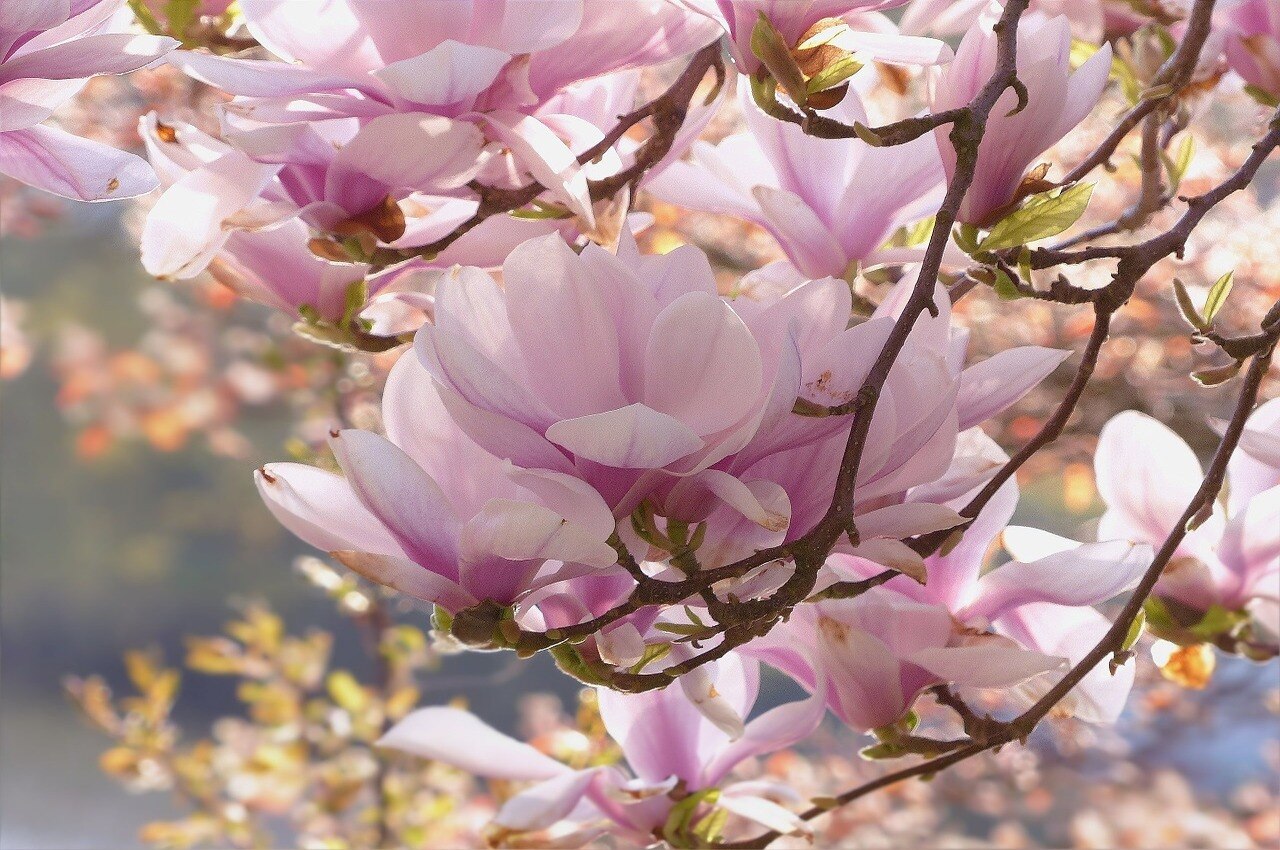
Magnolia trees are renowned for their stunning beauty and rich history, captivating the hearts of nature enthusiasts and gardeners alike. These magnificent trees have an intriguing story to tell, from their ancient origins to their diverse species and cultural significance. In this article, we'll explore 15 fascinating facts about magnolia trees that shed light on their unique characteristics and enduring allure.
From their early presence during the age of dinosaurs to their symbolic significance in various cultures, magnolia trees have left an indelible mark on the natural world. Whether you're a gardening enthusiast, a history buff, or simply someone who appreciates the wonders of nature, these facts will offer a delightful journey into the captivating realm of magnolia trees. Let's embark on this exploration together and uncover the intriguing secrets that make magnolia trees a beloved and cherished part of our natural landscape.
Key Takeaways:
- Magnolia trees, with a history dating back over 95 million years, symbolize strength and endurance, captivating people with their timeless beauty and cultural significance.
- Magnolia trees, reaching towering heights and exhibiting diverse flower varieties, attract pollinators and hold ornamental value, adding elegance and grandeur to landscapes worldwide.
Magnolia Trees Have Existed for Millions of Years
Magnolia trees are ancient, with a history dating back over 95 million years, making them one of the oldest flowering plants on Earth. These majestic trees have witnessed the rise and fall of various civilizations and have remained a symbol of strength and endurance throughout the ages.
Magnolia Trees Are Named After a French Botanist
The genus Magnolia was named after the French botanist Pierre Magnol, who made significant contributions to the field of botany in the 17th and 18th centuries. This nomenclature serves as a tribute to his invaluable work and legacy in the world of plant taxonomy.
Magnolia Trees Have Diverse Cultural Significance
Magnolia trees hold profound cultural significance in many parts of the world. In the United States, the magnolia is the state flower of Louisiana and Mississippi, representing beauty, dignity, and endurance. Additionally, in Chinese culture, the magnolia is associated with femininity and beauty.
Magnolia Trees Are Believed to Have Medicinal Properties
Throughout history, various parts of the magnolia tree have been used in traditional medicine. The bark, flowers, and leaves are believed to possess medicinal properties, with applications ranging from stress relief to the treatment of respiratory ailments.
Magnolia Trees Can Reach Towering Heights
These impressive trees can grow to towering heights, with some species reaching up to 80 feet in optimal conditions. Their commanding presence and striking blooms make them a captivating addition to any landscape.
Magnolia Trees Exhibit Diverse Flower Varieties
With over 200 species of magnolia trees, the diversity of their blooms is truly remarkable. From delicate white petals to vibrant shades of pink and purple, each variety offers a unique and enchanting floral display.
Magnolia Trees Attract Pollinators
The fragrant blossoms of magnolia trees attract a variety of pollinators, including bees and butterflies, contributing to the ecological balance of their habitats. This natural allure adds to the magnolia's charm and ecological importance.
Magnolia Trees Are Resilient in Various Climates
Magnolia trees are adaptable and can thrive in a range of climates, from temperate regions to subtropical environments. Their resilience makes them a popular choice for landscaping projects across diverse geographical locations.
Magnolia Trees Have Ornamental Value
Beyond their natural beauty, magnolia trees hold significant ornamental value in landscaping and horticulture. Their lush foliage and captivating blossoms make them a favored choice for creating visually stunning outdoor spaces.
Magnolia Trees Are Linked to Folklore and Mythology
In folklore and mythology, magnolia trees are often associated with themes of purity, perseverance, and transformation. These symbolic connections have woven the magnolia into the fabric of storytelling and cultural traditions throughout history.
Magnolia Trees Are Featured in Art and Literature
The timeless allure of magnolia trees has inspired countless artists, writers, and poets. From intricate botanical illustrations to evocative literary references, the magnolia's beauty has left an indelible mark on the creative world.
Magnolia Trees Are Integral to Botanical Research
Magnolia trees play a crucial role in botanical research, contributing to the study of plant genetics, ecology, and conservation. Their genetic diversity and evolutionary history provide valuable insights for scientists and researchers.
Magnolia Trees Are Celebrated in Gardens and Arboretums
Gardens and arboretums around the globe showcase the splendor of magnolia trees, allowing visitors to immerse themselves in the enchanting world of these remarkable botanical wonders. These curated spaces serve as living tributes to the magnolia's enduring appeal.
Magnolia Trees Are Associated with Elegance and Grandeur
The magnificence of magnolia trees evokes a sense of elegance and grandeur, making them a favored choice for enhancing the aesthetic appeal of parks, estates, and public gardens. Their regal presence adds a touch of timeless sophistication to any landscape.
Magnolia Trees Are a Symbol of Timeless Beauty
With their timeless beauty and enduring presence, magnolia trees stand as a symbol of natural grace and timeless allure. Their significance transcends generations, embodying the everlasting charm of the natural world.
Magnolia trees, with their ancient lineage, cultural significance, and captivating beauty, continue to fascinate and inspire people around the world. Whether admired in gardens, depicted in art, or cherished in folklore, these remarkable trees serve as a testament to the enduring allure of nature's wonders.
Conclusion
Magnolia trees are not only stunning in appearance but also rich in history and cultural significance. Their diverse species, ancient origins, and unique reproductive system make them a fascinating subject for plant enthusiasts and nature lovers alike. From their medicinal uses to their symbolism in different cultures, magnolia trees continue to captivate and inspire. Whether admired in botanical gardens or incorporated into landscaping, these majestic trees contribute to the beauty and biodiversity of our natural world.
FAQs
Are magnolia trees difficult to care for?
Magnolia trees are generally low-maintenance, requiring well-drained soil, ample sunlight, and regular watering during their initial establishment. However, specific care needs may vary depending on the species and local climate.
Do all magnolia trees have large, showy flowers?
While many magnolia species are known for their large, fragrant flowers, some varieties produce smaller blooms. The size, color, and fragrance of magnolia flowers can differ significantly across various species and cultivars.
Was this page helpful?
Our commitment to delivering trustworthy and engaging content is at the heart of what we do. Each fact on our site is contributed by real users like you, bringing a wealth of diverse insights and information. To ensure the highest standards of accuracy and reliability, our dedicated editors meticulously review each submission. This process guarantees that the facts we share are not only fascinating but also credible. Trust in our commitment to quality and authenticity as you explore and learn with us.


